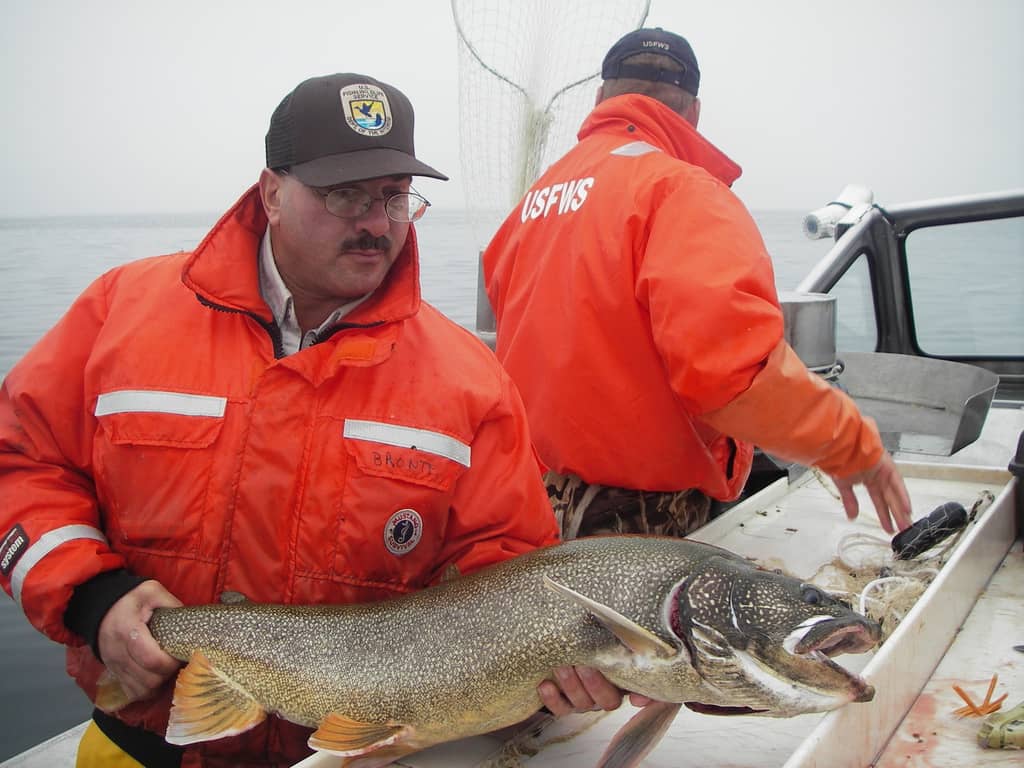Lake Trout Make Comeback in the Great Lakes
OutdoorHub Reporters 01.12.14

The recovery of lake trout in Lake Huron means that very soon, wildlife officials will no longer have to stock the species in the lake. According to michiganradio.com, lake trout are rapidly regaining ground after decades of parasitism by sea lampreys and complications with alewives.
“I felt we were so completely stymied by one thing after another after another. The litany of challenges working against the reestablishment of a self-sustaining lake trout population seemed insurmountable,” said Jim Johnson, a researcher with the Michigan Department of Natural Resources. “But then, with the collapse of alewives, everything changed.”
The lake trout is the largest trout native to the Great Lakes and was at one time economically vital to the area’s commercial and sport fishing industries. That era of prosperity for the species was interrupted when sea lampreys devastated the trout population from 1935 to 1965. Lampreys, sometimes referred to as “lamprey eels,” feed by hooking onto fish and consuming their blood. They are considered an invasive species and became a major problem after waterway construction in the early 20th century allowed them to enter many rivers and streams.
Lampreys are known to be detrimental to fish species where they are introduced. According to the Great Lakes Fishery Commission (GLFC), a single lamprey can kill up to 40 or more pounds of fish in its lifetime. In fact, when the GLFC was formed in 1955, one of its primary goals was to control the lamprey population in the Great Lakes. Thanks to the efforts of multiple agencies, a lengthy reduction program has shrunk lamprey numbers to about 10 percent of what they were in 1955.
After the severe reduction of sea lampreys, the lake trout in Lake Huron began to make a slow recovery. However, the fish were having problems reproducing. Biologists identified part of the to be related to alewives, which lake trout fed on. Alewives are a small saltwater fish that colonized the Great Lakes several decades ago when trout numbers were low. Due to the lack of predators, alewives multiplied. Alewives also cause problems for lake trout young and eggs, stymying their population growth.
As the number of alewives dwindled due to new predators such as salmon, the lake trout began making a speedier comeback. This is welcome news to anglers who prefer lake trout, which is a popular game fish and often praised for its taste.
“Oh yes. The end of stocking is in sight for the main basin of Lake Huron,” Johnson said.
Researchers are now working on making habitat more suitable for spawning lake trout.

